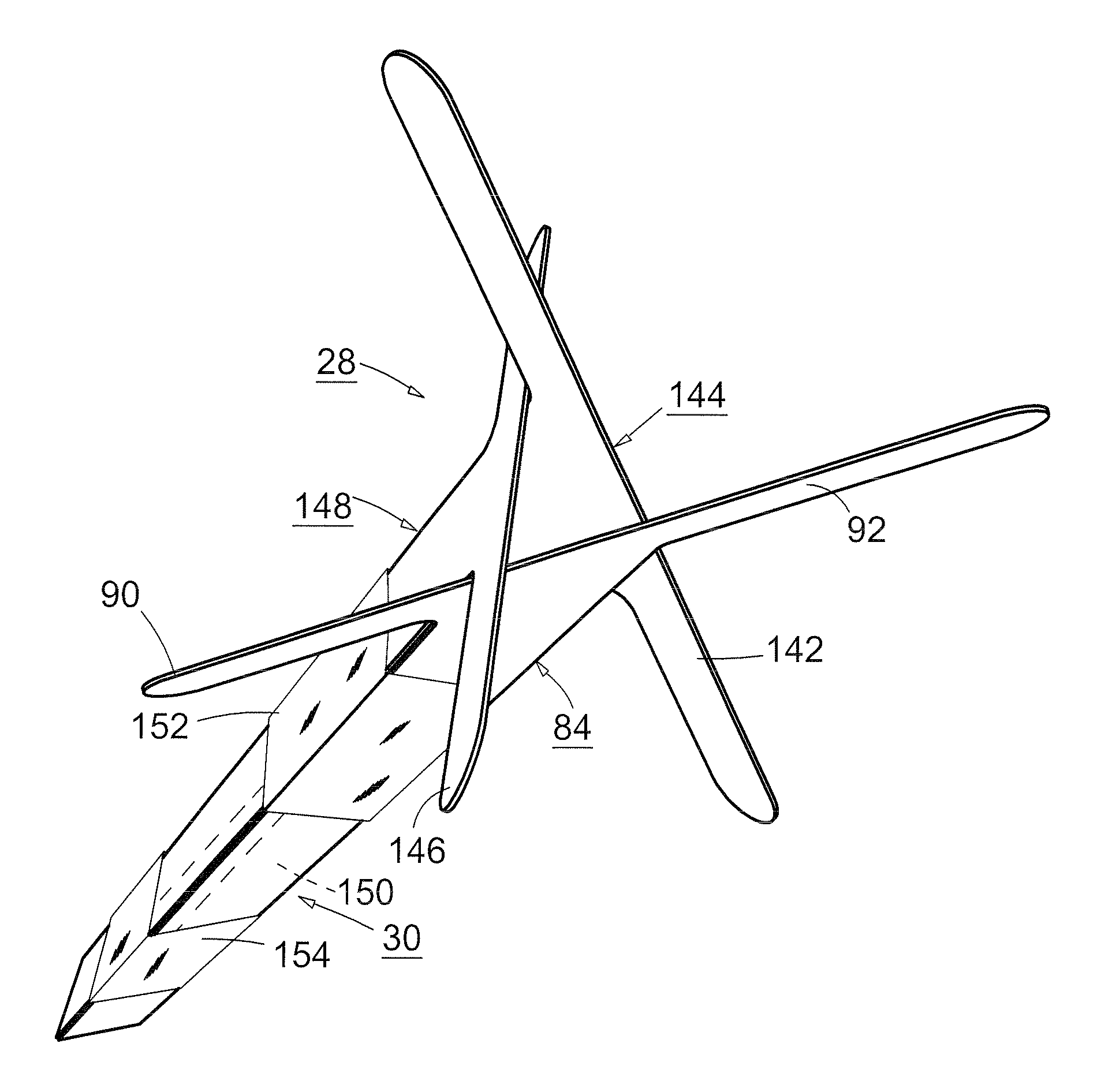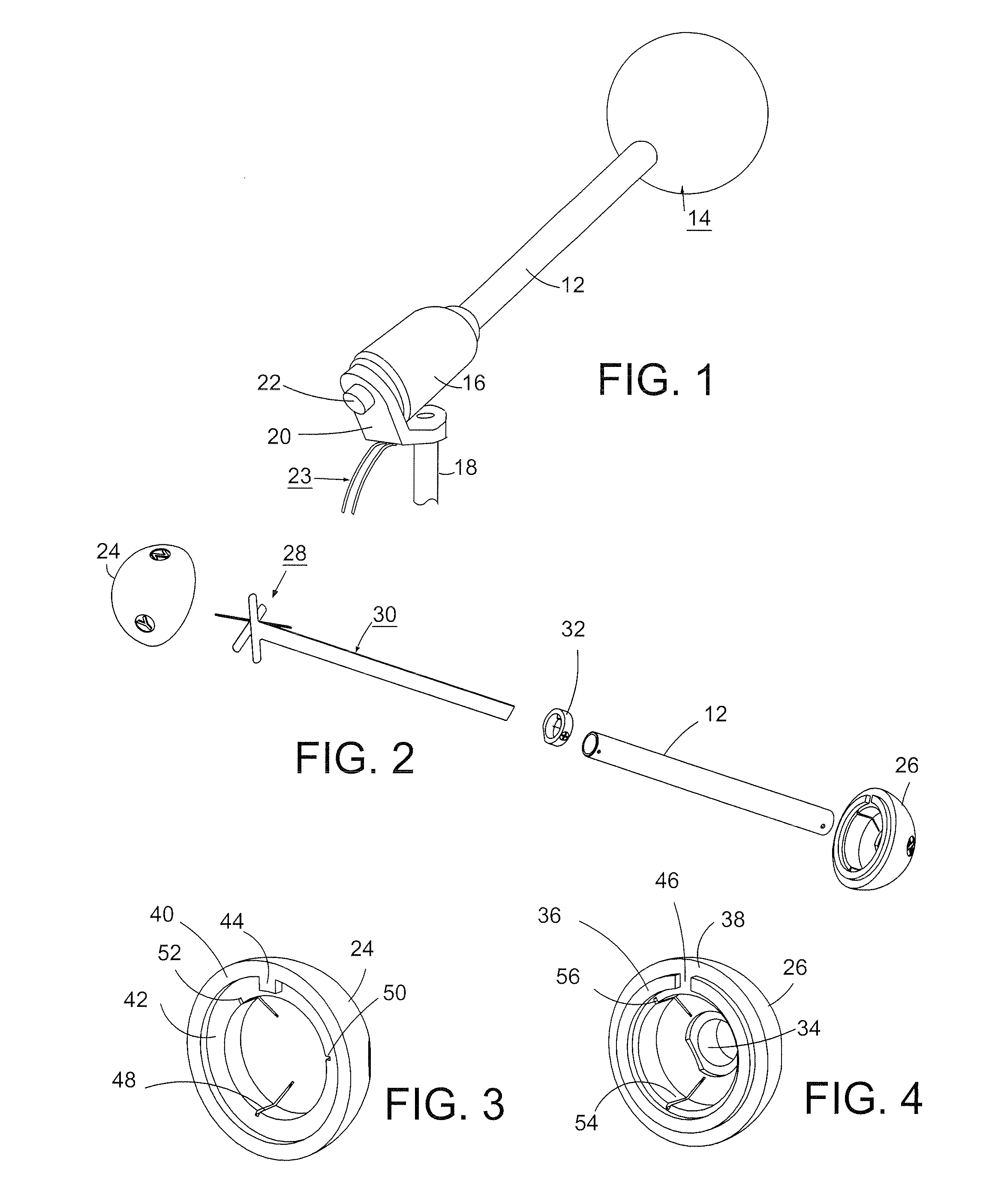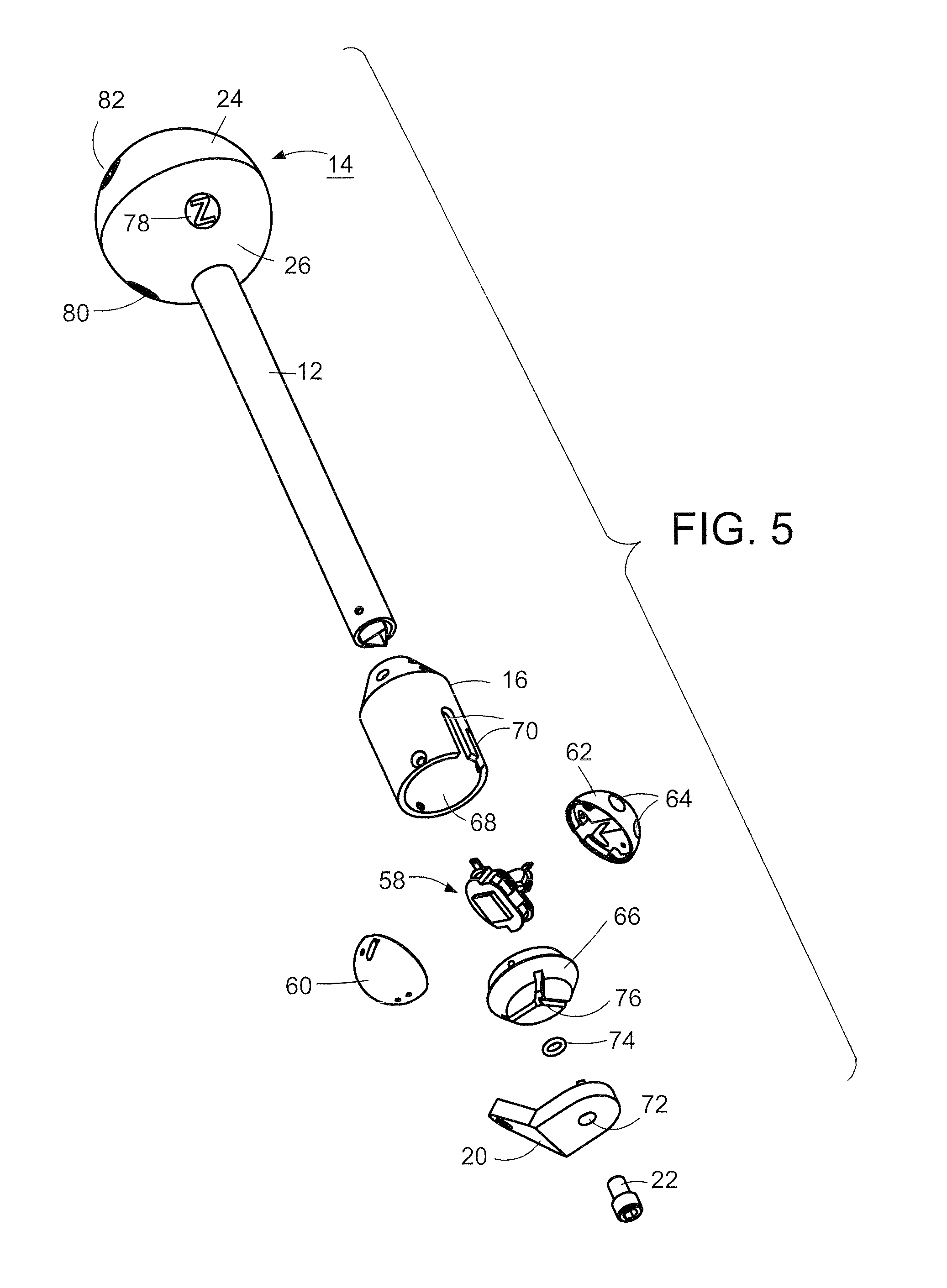Field probe
a field probe and probe body technology, applied in the field of field probes, can solve the problems of difficult mechanically reliable connection and manufacturing difficulties, and achieve the effects of improving performance, flat frequency response, and less manufacturing cos
- Summary
- Abstract
- Description
- Claims
- Application Information
AI Technical Summary
Benefits of technology
Problems solved by technology
Method used
Image
Examples
Embodiment Construction
[0036]The field probe as shown in FIG. 1 comprises a tubular stalk 12 having a spherical, radio frequency-transparent housing 14 at one end and an electronic circuit housing 16 at the opposite end. The electronic circuit housing 16 is supported on a vertical post 18 by a bracket 20, which is configured so that the axis of the stalk is disposed at an angle relative to a horizontal plane corresponding to the angle between the diagonal of a cube and its base, i.e., approximately 35.3°. The electronic circuit housing 16 is secured to the bracket 20 by a screw 22, which can be loosened to allow rotation of the probe about the axis of the stalk. As will appear from the description to follow, the dipoles are disposed at 54.7° (90°-35.3°) relative to the stalk axis. Consequently any one of the dipoles can be brought to a vertical position by rotation of the probe about the stalk axis, and the three dipoles inside the RF-transparent housing 14 can be oriented in relation to mutually perpendi...
PUM
 Login to View More
Login to View More Abstract
Description
Claims
Application Information
 Login to View More
Login to View More - R&D
- Intellectual Property
- Life Sciences
- Materials
- Tech Scout
- Unparalleled Data Quality
- Higher Quality Content
- 60% Fewer Hallucinations
Browse by: Latest US Patents, China's latest patents, Technical Efficacy Thesaurus, Application Domain, Technology Topic, Popular Technical Reports.
© 2025 PatSnap. All rights reserved.Legal|Privacy policy|Modern Slavery Act Transparency Statement|Sitemap|About US| Contact US: help@patsnap.com



